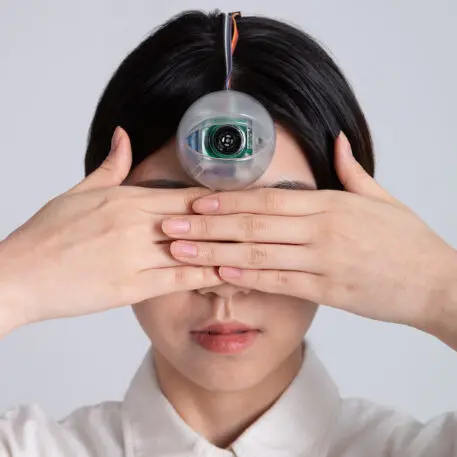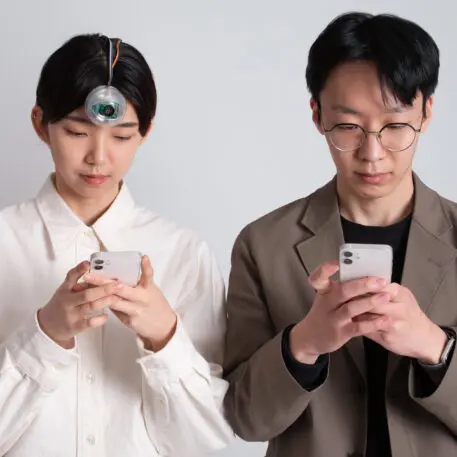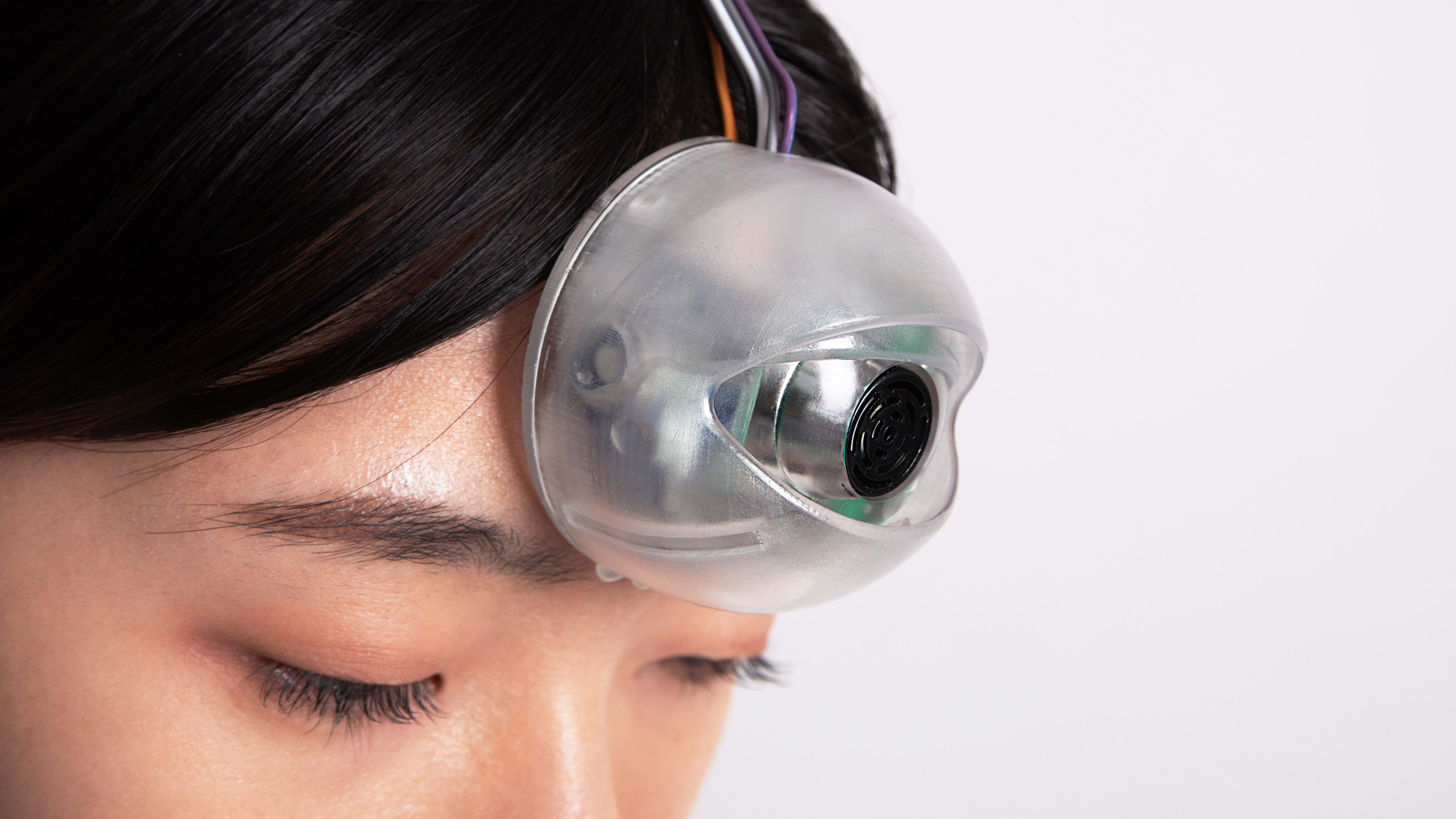We’re on our phones more than ever, distractedly looking down at our screens while navigating the world around us. The designer of a new device wants to draw attention to the perils of this behavior—before it’s too late.
Industrial design student Minwook Paeng’s developed a prototype robot eye called Third Eye, that attaches to a smartphone user’s forehead. The device uses sensors to alert the user when they’re about to run into something while looking down at their phone. Paeng decided to create the Third Eye as a satirical critique of just how deeply smartphones have fused with our everyday activities.

In some sense, the future that Paeng is satirizing is already here. American adults spent about 3.5 hours a day on their phones in 2019. That adds up to nearly nine years over a lifetime. And teens spent over 7 hours a day on their phones in that same year. As of last April, average use ticked up to 4.3 hours a day.

Paeng doesn’t see this as a good thing, but he suggests we need to view it more “positively so that we can face the situation we are in, objectively and critically,” he explains. He suggests that the absurdity of an assistive third eyeball might just get all of us to blink, and grasp a little bit more closely at our humanity.
Recognize your brand’s excellence by applying to this year’s Brands That Matter Awards before the early-rate deadline, May 3.
